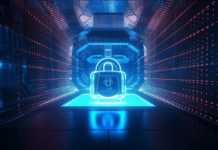As cybercrime continues to grow, it is more important than ever for businesses to take steps to protect themselves. According to a recent report, the global cost of cybercrime is expected to reach $7.8 trillion in 2023. That’s a lot of money! This number will only continue to grow as more and more people and businesses become reliant on technology. This blog post will discuss some of the most common types of cybercrime and how you can protect your business from them.
What is the definition of cybercrime?
Cybercrime is any type of crime that is committed using a computer or other digital device. This includes hacking and identity theft, fraud, and online piracy. Cybercrime is a growing problem because it is becoming easier for criminals to commit these crimes without being detected. As the world becomes more connected, it provides more opportunities for cybercriminals to exploit vulnerabilities.
Types of cybercrime
There are many different types, but among them, the following stand out:
- Cyber Espionage: The act of cyber espionage is the unlawful acquisition of data from a computer or other electronic device for spying. This data gathering is frequently done to gain sensitive or classified information, trade secrets, or other forms that may competitively give an advantage over the attacker or be sold for money. All that the perpetrator wants to do sometimes is simply harm the victim’s reputation by revealing personal details or company practices that might make them look bad.
- Theft of financial or credit card payment data: Card fraud may take many forms, but the most frequent is stealing someone’s real credit or debit card and making purchases. However, that form of credit card fraud is becoming less frequent daily. Card-not-present (CNP) fraud dramatically increased. In this crime, the cybercriminal uses data stolen in a prior hack to make online or phone purchases without ever having had the card in their hands.
- Cryptojacking: Cryptojacking is a type of cybercrime in which the attacker uses your computer’s processing power to mine cryptocurrency without your permission. This can slow down your computer, use electricity, and lead to higher utility bills. In some cases, cryptojacking can even damage your computer.
- Ransomware: In ransomware attacks, cybercriminals take control of a victim’s computer or device and demand ransom to release it. These attacks have become more common as criminals have become more sophisticated in their techniques. Ransomware can devastate businesses, leading to the loss of sensitive data or the inability to access essential systems.
- Email and internet fraud: Email and internet fraud includes any fraudulent activity using email or the internet. This can include phishing scams, where criminals send emails that appear to be from a legitimate company to gather personal information, or malware attacks, where malicious software is downloaded onto a victim’s computer without their knowledge.
- Identity fraud: Identity fraud is a type of cybercrime where criminals use stolen personal information, such as Social Security numbers or credit card numbers, to commit fraud. This can include opening new accounts in someone else’s name, making unauthorized charges on existing accounts, or taking out loans in someone else’s name. Identity fraud can devastate the victim, damaging their credit score and making it difficult to obtain new lines of credit.
How to protect yourself from cybercrimes?
As you can see, there are many different types of cybercrime. Unfortunately, these crimes will only become more common as technology advances. That’s why it’s so crucial to take steps to protect yourself. Here are some tips on achieving this:
- Take measures to help protect yourself against identity theft: Identity could happen if you’re tricked into giving away personal information online, or a cybercriminal steals your e-mail and accounts to access sensitive information. That’s why it’s crucial to protect your data. A VPN (a virtual private network) can also help safeguard the data you send and receive online, especially when using public Wi-Fi.
- Use strong passwords: Strong passwords are one of the best ways to protect your accounts from being hacked. Don’t use easily guessed words like your name, birth date, or favorite sports team. Instead, use a mix of letters, numbers, and symbols. And don’t use the same password for all your accounts—if one account is compromised, the hacker will also have access to all your other accounts.
- Be careful about what you click on: Many cyber attacks begin with an email phishing scam. That’s why it’s important to be careful about what emails you open and what links you click on. If you’re unsure whether an email is legitimate, contact the company directly to inquire. And if you receive an unsolicited email with an attachment from someone you don’t know, don’t open it.
- Keep your software up to date: Out-of-date software can provide a gateway for cybercriminals to access your computer. That’s why it’s important to keep your operating system, web browser, and other programs up to date. Many software programs will update automatically, but you should occasionally check to ensure everything is up to date.
- Back up your data: If you are a victim of a cyber attack, it’s crucial to have a backup of all your data. If your computer is infected with ransomware, you can restore your files from the backup. There are many ways to back up your data, such as using an external hard drive or cloud storage service.
By following these tips, you can help protect yourself from becoming a victim of cybercrime. Unfortunately, even if you take all the necessary precautions, there’s no guarantee that a cybercriminal won’t target you. That’s why it’s essential to have a plan in place if you become a victim of a cyber attack.




